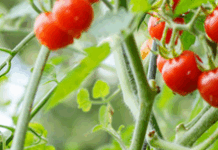A Cornell-led study, published Jan. 18 in the journal Science, shows that apple orchards surrounded by agricultural lands are visited by a less diverse collection of bee species than orchards surrounded by natural habitats.
In turn, apple production suffers when fewer, more closely-related species of bees pollinate an orchard. Production improves in orchards surrounded by natural habitats, which then draw a broader selection of species to apple blossoms.
The researchers examined 10 years of data from 27 New York state apple orchards; the study accounted for the types of landscapes that surround these orchards, measured apple production and surveyed the species of bees that visited each orchard.
The researchers also reconstructed the evolutionary history and relatedness of New York native bee species to better understand species patterns that played out across these orchard bee communities. This reconstruction is represented by a branching tree-like diagram of related species, called a phylogeny.
“Orchards that have bee communities that are more closely related to each other did worse in terms of their fruit production, and the communities that are more broad across the phylogeny did much better,” said Heather Grab, Ph.D. ’17, the paper’s first author and a postdoctoral researcher in the lab of Katja Poveda, associate professor of entomology and a co-author of the study. Bryan Danforth, professor of entomology, is a senior author of the study.
Species of bees exhibit different behaviors in how and when they pollinate flowers. Some species approach from the side, others from the top, and they each may feed at different times of day and with varied frequencies, all of which affect how completely an apple flower is pollinated.
Organs in apple flowers must receive a certain number of pollen grains in order to develop a full complement of seeds. When seeds do well, the tissue that supports those seeds, the fleshy part of the fruit, is also more fully developed.
“If only half of the seeds mature fully, then the fruit is misshapen,” which in turn affects weight and salability, Grab said.
In this way, habitats that surround farms affect the diversity of bee communities and, thus, an orchard’s productivity.
Common species such as the mining bee (Andrena regularis), bumblebees (from the genus Bombus) and sweat bees (Lassioglossum), for example, were able to tolerate agriculture-dominated landscapes. At the same time, many other species of mining bees (Andrena genus), which are efficient apple pollinators, did not do well when orchards were surrounded by agricultural lands.
“We don’t know what the mechanisms are, but bee species that are more closely related to a species that does poorly are also likely to do poorly” in agricultural dominated landscapes, Grab said.
The phylogeny revealed that the bee species that visit orchards surrounded by farmlands are not a random sample, but represent sets of related species that are resilient to these habitats.
Co-author Michael Branstetter, a research entomologist at the United States Department of Agriculture-Agricultural Research Service in Logan, Utah, created the phylogeny. Other co-authors are Greg Loeb, Cornell professor of entomology; Mia Park, Ph.D. ’14, a postdoctoral fellow at North Dakota State University; and Eleanor Blitzer, a biologist at Carroll College.




